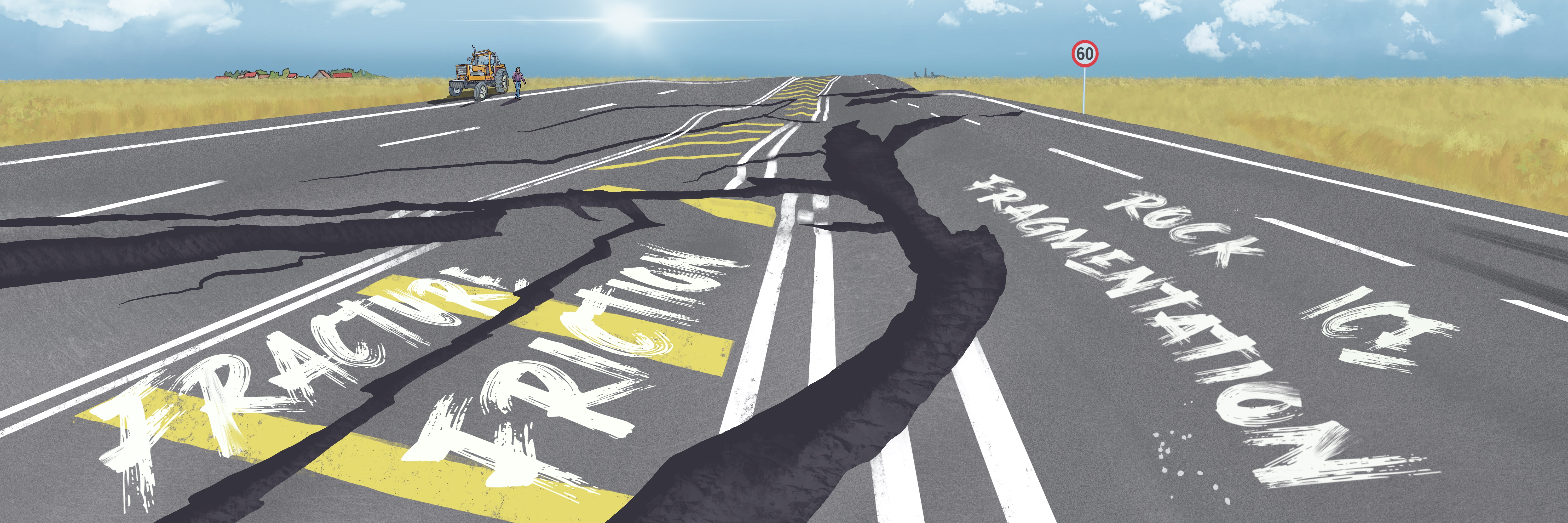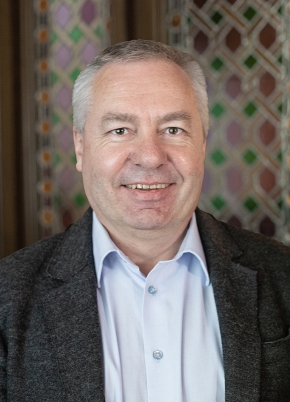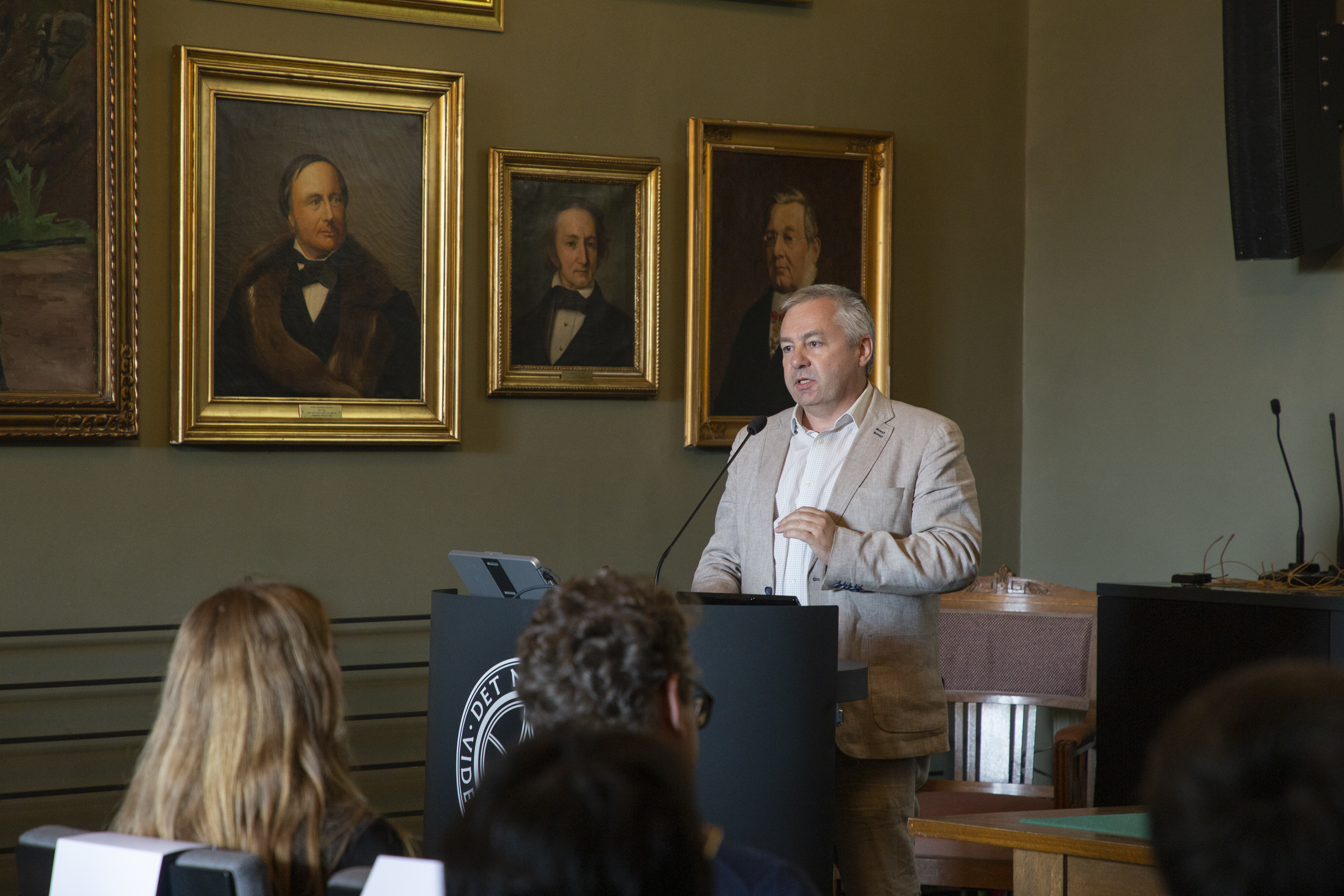Meet the project: 'Friction and Fracture and the Onset of Geohazards (FricFrac)'
Led by: Anders Malthe-Sørenssen and Francois Renard.

The ever-changing landscapes of our planet are shaped by a delicate interplay between gradual processes and sudden, dramatic events. These events often occur at geological interfaces or interface zones and encompass earthquakes, landslides, glacier collapses, and rock falls. They are driven by the accumulation of energy within the Earth's subsurface and cryosphere. When this energy reaches critical thresholds, even the slightest disturbance can trigger a rapid and potentially catastrophic release.
Geohazards, whether originating deep within the Earth or at its surface, significantly influence our planet’s structure and have far-reaching consequences for human societies. Regrettably, most of these events are unpredictable. FricFrac seeks to expand our knowledge of the factors influencing the initiation and magnitude of these geohazards.

Professors Anders Malthe-Sørenssen and François Renard, both professors at the University of Oslo (UiO), advocate for a physics-based approach to gain a deeper understanding of the friction and fracture processes that underlie these burst-like dynamics. Their goal is to develop numerical models capable of predicting these geohazards by enhancing our theoretical understanding.
Project Objectives
When asked about the primary objective of the FricFrac project and how it addresses gaps in our understanding of geohazards, Anders and François respond: “Geohazards occur on rocky planets of the solar system. Some, such as earthquakes and volcanic eruptions, find their origin deep in the interior of the planet; others, such as landslides and glacier collapse, develop at the surface. Geohazards shape the surface of our planet and may have a profound impact on societies. Most of them cannot be predicted. The project FricFrac will advance knowledge of the elements exerting important controls on the onset and size of geohazards.”
Interdisciplinary Approach and Collaborations
The project assembles a highly interdisciplinary and international team of researchers specializing in geology, geophysics, glaciology, and physics. An integrated approach that combines field observations, laboratory experiments, theoretical analyses, and numerical modeling will be employed to gain a deeper understanding of fault and glacier instability. Collaborating with researchers from the departments of Geosciences and Physics and the Njord Centre at the University of Oslo, the project is fortunate to welcome three professors from the USA, Wales, and France for an extended period at CAS.
When asked how FricFrac distinguishes itself from other research projects in the field, they note that what sets FricFrac apart is the fusion of “expertise in physics and geosciences, data mining, and theory. Moreover, it's the willingness of the participants to delve into research outside their usual comfort zones.”

Anticipating Impact and the Significance of Fundamental Research
Discussing the expected outcomes of the project and its potential impact on the research field, they observe that the enigma of how rocks or ice slide past each other along interfaces, a process called friction, remains unsolved. Currently, the physics of sliding on these materials is primarily phenomenological, hindering the development of predictive models. Progress in this area holds significant implications for earthquake, landslide, and glacier mechanics.
When queried about the importance of fundamental research, they share their perspective” As last year's Nobel Prize winner Anton Zeilinger said, "Real breakthroughs are not found because you want to develop some new technology, but because you are curious and want to find out how the world is." This philosophy guides our approach at CAS this year as we focus on basic research, which may lead to breakthrough discoveries.”
The Scientific Value of a Year at CAS
Reflecting on why CAS serves as the ideal platform for this research and what they hope to achieve during their year here, they share: “CAS supports curiosity-driven science. This provides researchers with a rare opportunity in their careers to focus on high-risk, high-reward fundamental research questions. This year, we aim to propose new models of how water circulating at the base of glaciers influences glacier collapse, how atomic-scale motions controls the onset of fracture and sliding in rocks, and how water influences whether rocks break or deform slowly. We also anticipate that our work will lead to long lasting collaborations among us beyond our year at CAS.
So far, they reveal that they have commenced their project with a field trip to Ny Ålesund, an Arctic research station in the Svalbard archipelago. During this trip, they engaged in lively discussions about the FricFrac project, identifying key scientific questions, and fostering team spirit. This journey has paved the way for exciting collaborations throughout their year at CAS.
